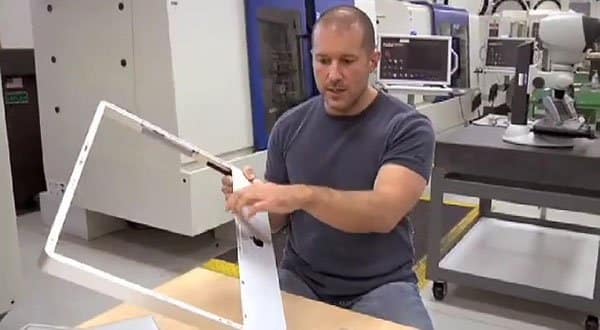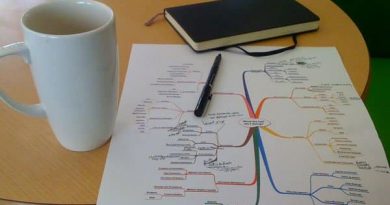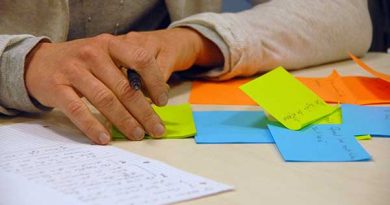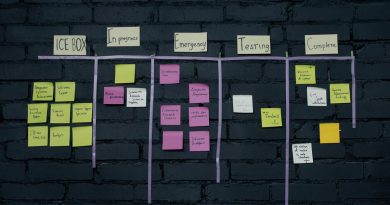How Does Apple’s Design Process Work?
Apple is one of the unique companies that leads the market through its designs and creative, innovative products. For years, Apple products have attracted users’ love, achieving the so-called empathic design challenge. On a frequent basis each year, Apple unveils to the market new innovative products that strengthen its competency in comparison to other computer and mobile manufacturers in the market.
As a designer, I have always wondered about the design process behind all these amazing products. Creativity is not enough to transform a design into a successful product; an innovative process needs to be implemented in order to achieve this goal. While Apple’s design team rarely talks to the media, Apple design chief Jonathan Ive’s interview with the New York Times revealed interesting insights about the design process inside Apple.
Jonathan Ive started with Steve Jobs, who created the core principles of the company’s design policy, which are still being applied with new chief executive Timothy Cook. One of these core principles is the focus on product design. This focus is the secret behind Apple’s high-quality design. Steve Jobs used to say: “Quality is more important than quantity. One home run is much better than two doubles.”
In his book, “Inside Apple: How America’s Most Admired – and Secretive – Company Really Works,” Adam Lashinsky talks about Apple’s production process and framework as follows:
Ideas
At this stage, senior managers express their interest in creating a new product, and basic brief information about it is discussed. There is not yet a complete or visual concept for the product. This stage includes discussing the new product idea and making initial sketches.
Product Start-Up Created
Once the product is defined, there is an internal start-up phase that works separately from the rest of the team to focus on the new product’s development. The new product start-up team is separated using office barriers and sometimes receives a part of the building’s offices dedicated to its workflow. This procedure frees the new product team from the company’s regular structure and helps focus on the development process.
Prototyping
Also called the “pixel-perfect prototypes” and “10 to 3 to 1,” this stage is the start of creating the new product mockup. This process takes a lot of time and effort but helps develop a visual for the project.

The name “10 to 3 to 1” comes from the way the prototype is selected. First, the design team has complete freedom to explore its members’ creative ideas by designing 10 concepts. Then three concepts are selected as finalists, and finally they select one final product to use during the process.
Apple’s New Product Process (ANPP)
Once the prototype is selected and the company agrees to start production, the ANPP is a document that describes the process in detail and maps its different stages. The ANPP is owned by the engineering product manager (EPM) and the global supply manager (GSM). While the EPM coordinates the work between engineers, the GSM focuses on the production part. This process was first applied to the company during the development of Macintosh desktop computers.
Weekly Executive Team Review
Every Monday, the executive team meets to go over the production process inside the company. This regular meeting helps the team achieve its goals by reviewing small parts of the process on a weekly basis, which means the production process is no more than two weeks away from the executives’ decision.
Peer Design Meetings
In addition to the executive meeting discussion, there are peer review meetings between the design team and engineers that focus on improving the design idea. These meetings can be like regular production meetings or go crazy in order to fuel creative ideas.
The Production Management
Both the engineering product manager (EPM) and the global supply manager (GSM) are responsible for the production process and are always in discussion in order to ensure the best for the product. Both the EPM and GSM spend most of their time in China, where the production takes place.
Testing the Product
Once the beta product is created, both the EPM and GSM take it back to Cupertino to obtain reviews and feedback from the executives. Then the product goes back to China to apply those comments. This process can repeat again and again in order to reach Apple’s high-quality standards.
Packaging
At this stage, the packaging of the product is designed and tested on the new prototypes. How the package opens is subjected to intensive testing in order to achieve the best consumer experience.
Rules of the Road
The last step in the process is to create a Rules of the Road document that evaluates the whole process and each milestone within it. It is a very secret document that ensures the overall quality of both the product and the process.
Impressions of Apple’s Design Process
The first impression of the process described above is its few steps and straightforward approach to designing a new product. Apple simply eliminated unwanted steps, such as focus groups, as they may be offensive. Additionally, it eliminated everything that is not essential, and this is reflected in Apple product designs.
Also, the production process is very expensive in order to attain the expected quality, which involves a lot of designs and testing for different materials. The process allows a maximum amount of creative thinking and acceptance of different ideas. If the design is not as expected, company leaders are willing to throw everything away and start over again.
The design and production process provides a practical lesson that creative products do not just come out of a great team but through an excellent design process as well. During this process, enough space should be given to consider creative and maybe even crazy ideas and discuss them seriously as a business opportunity. While many of the executives believe that the creative production process can be expensive compared with the ordinary process, Apple provides an example of the results of this process and how it can increase company profits and improve its image in the market.






